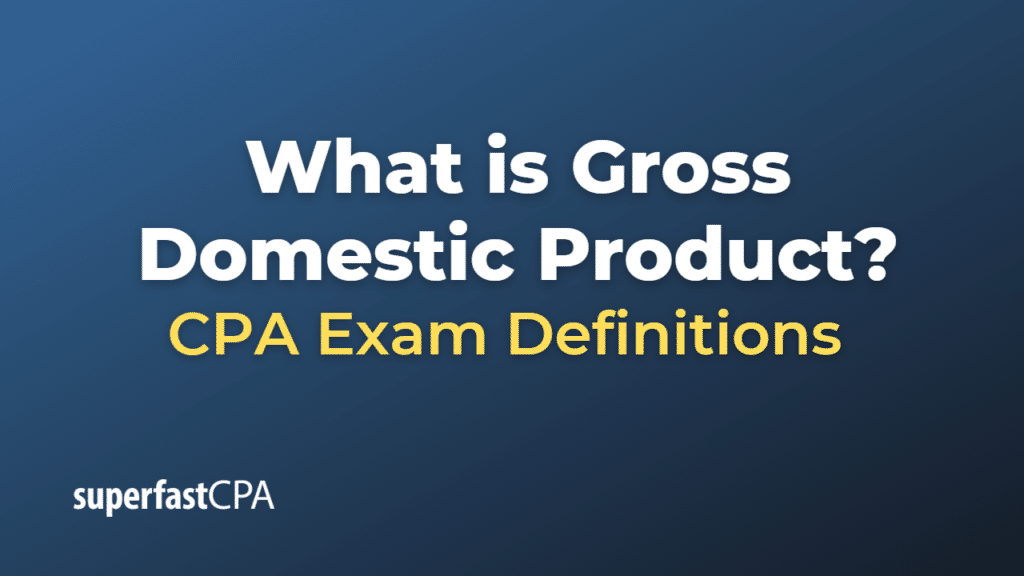Gross Domestic Product
Gross Domestic Product (GDP) is a comprehensive measure of the total value of all goods produced and services provided within a country’s borders in a specific time period. It’s a tool used to compare the economic health and growth of nations, and it serves as a broad measure of overall domestic production. It essentially provides a snapshot of a country’s economic health.
GDP is commonly measured in two ways:
- Expenditure Approach: This is the sum of all the money spent on final goods and services in an economy. It’s calculated by adding up all of the following:
- Consumption (C): All private consumption/ consumer spending in an economy.
- Investment (I): Investments by businesses and households in capital, including construction of new structures, purchases of machinery and equipment, and changes to inventories.
- Government Spending (G): Spending by all levels of government on final goods and services.
- Net Exports (X – M): Exports minus imports, or the net amount that the rest of the world spends on a country’s goods and services.
So, the formula would look like this: GDP = C + I + G + (X – M)
- Income Approach: This calculates the total income earned by all households and firms in the economy. It includes wages earned by workers, rental income earned by property owners, interest earned by capital owners, and profits earned by business owners.
GDP doesn’t include the value of intermediate goods used in production to avoid double-counting. Also, GDP only includes goods and services produced within a country’s borders, regardless of the nationality of the producer.
While GDP is a widely used economic indicator, it’s important to note that it doesn’t account for some aspects of economic well-being, such as the distribution of wealth, environmental quality, or the amount of leisure time.
Example of Gross Domestic Product
Imagine we are calculating the GDP of a hypothetical country called “Economica” for the year 2023 using the expenditure approach. The national statistics agency in Economica has collected the following data:
- Consumption (C): Private consumption or consumer spending in Economica for the year 2023 amounts to $5 trillion.
- Investment (I): Businesses and households have made investments totaling $3 trillion.
- Government Spending (G): All levels of government in Economica have spent $2 trillion on final goods and services.
- Exports and Imports (X – M): Economica exported goods and services worth $1 trillion and imported goods and services worth $2 trillion.
We can plug these figures into the GDP formula like so:
GDP = C + I + G + (X – M)
= $5 trillion (Consumption) + $3 trillion (Investment) + $2 trillion (Government Spending) + ($1 trillion (Exports) – $2 trillion (Imports))
= $5 trillion + $3 trillion + $2 trillion – $1 trillion
= $9 trillion
Therefore, the GDP of Economica for the year 2023 is $9 trillion. This number gives us an idea of the size of Economica’s economy and the value of goods and services it produced that year.
Remember, this is a simplified example. In reality, calculating GDP involves many more subtleties and complexities, and it requires robust statistical methods and data collection efforts.













